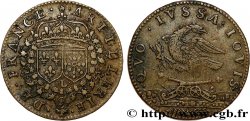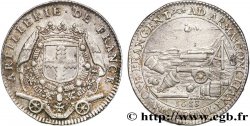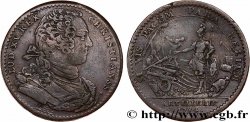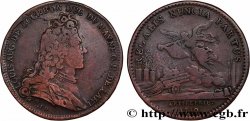fjt_755896 - ARTILLERY Louis XV 1744
10.00 €(Approx. 10.70$ | 8.60£)
Quantity
Add to your cart

Type : Louis XV
Date: 1744
Mint name / Town : s.l.
Metal : silver plated brass
Diameter : 28 mm
Orientation dies : 6 h.
Weight : 7,24 g.
Edge : lisse
Rarity : R1
Coments on the condition:
Patine très hétérogène. Argenture très abîmée, voire grattée. Nombreuses traces d’usure
Catalogue references :
Predigree :
Exemplaire provenant de la Collection MARINECHE
Obverse
Obverse legend : LUD . XV . REX . CHRISTIANISS.
Obverse description : Tête à droite de Louis XV signé FM.
Obverse translation : Louis XV roi très chrétien.
Reverse
Reverse legend : NON IMPUNE TENTATUR ADITUS ; À L'EXERGUE : ARTILLERIE. 1744.
Reverse description : Le dragon gardant l'entrée du jardin des Hespérides.
Reverse translation : Nul ne s'en approche impunément.
Commentary
Plus précisément, un collectionneur nous a signalé que cet exemplaire était : saucé c’est-à-dire plongé dans un bain chaud de métal blanc, étain et/ou plomb. Cette méthode était déjà en usage dans l'Antiquité.







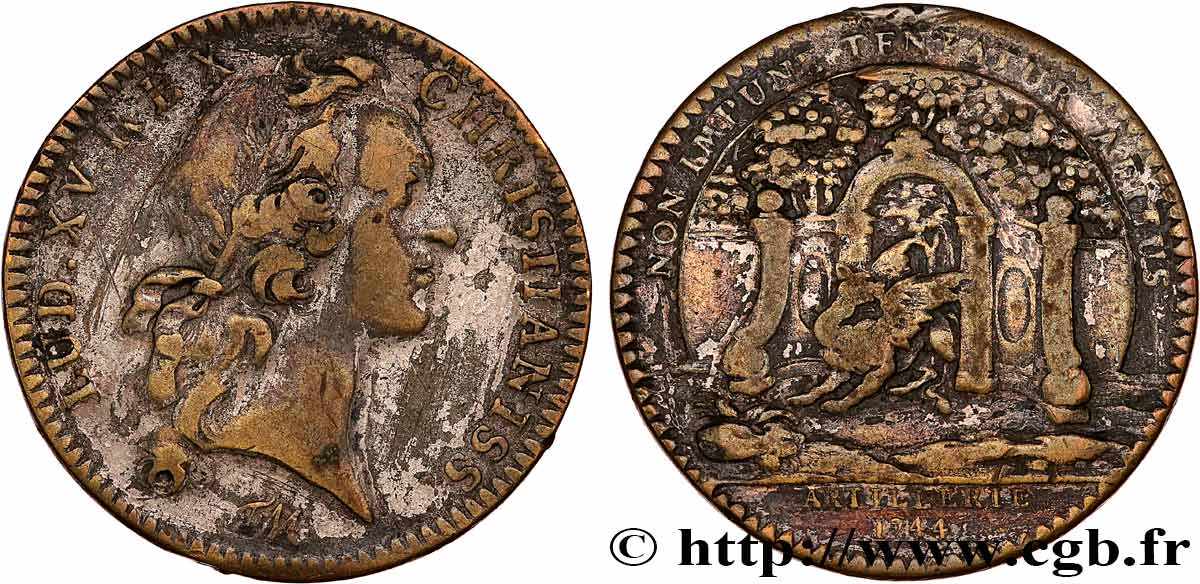
 Report a mistake
Report a mistake Print the page
Print the page Share my selection
Share my selection Ask a question
Ask a question Consign / sell
Consign / sell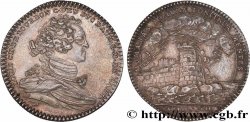
 Full data
Full data